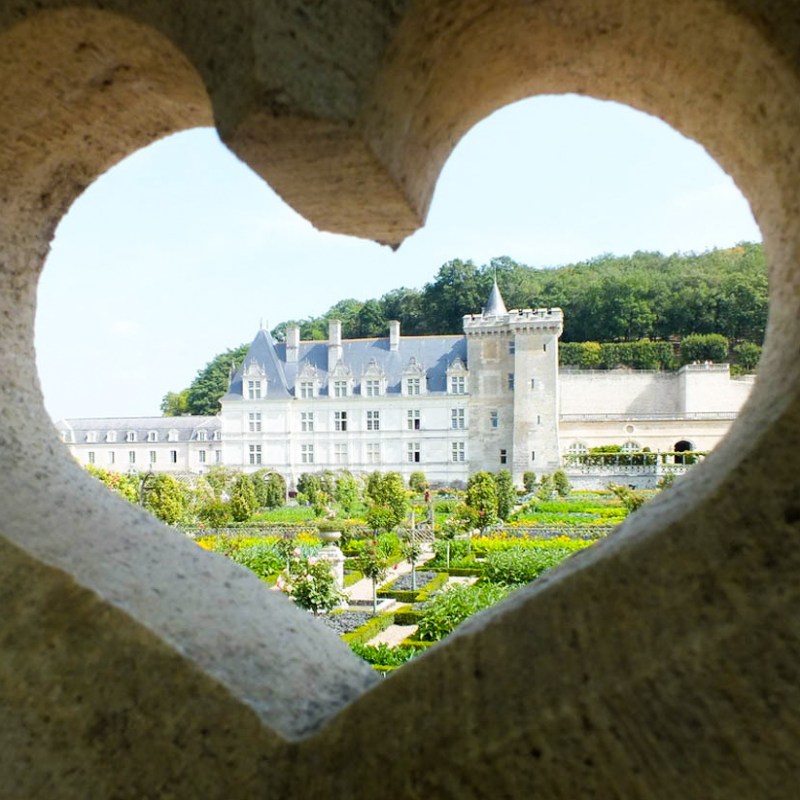
Sage Scott
With its fertile fields and flowing rivers, France’s Loire Valley was a strategic location for fortresses during the Hundred Years’ War between France and England. When the conflict finally came to an end, France’s elite filled the French countryside with opulent castles that served as signs of their wealth and influence.
Videos by TravelAwaits
Today, the castles of the Loire Valley attract more than three million visitors each year, making the UNESCO World Heritage site one of the most popular French tourist destinations outside the capital city of Paris. But with so many castles to choose from, it’s difficult to know which curved keeps and manicured gardens to visit.
Whether you want to explore one castle on a day trip from Paris or spend a few days exploring several castles in the Loire Valley, here are a few marvelous structures to consider.

1. Chateau De Blois, Blois, France
About a 2-hour drive from Paris, the Chateau de Blois was the birthplace of King Louis XII. Constructed around a single courtyard, the castle’s four wings represent four distinct periods and styles: Gothic, Flamboyant, Renaissance, and Classicism.
The Chateau de Blois was one of two royal residences kept by King Francois I. He ordered the construction of the Renaissance wing, with its elaborate exterior staircase covered with fine bas-relief sculptures, immediately after ascending to the throne

Sage Scott
Inside this wing, keep an eye out for ermines and fire-breathing salamanders, the spirit animals of Queen Anne of Bretagne and King Francois I, respectively.
Pro Tip: Be sure to take in the view of the Loire River and the town of Blois from the Foix Tower, one of the remaining components of the original medieval fortress.

Sage Scott
2. Chateau De Chambord, Chambord, France
Surrounded by a 13,000-acre wooded game reserve, the Chateau de Chambord was designed as a hunting lodge for King Francois I so that he could be closer to his mistress, the Comtesse de Thoury. Despite not serving as one of the king’s official residences, this French Renaissance castle is the largest in the Loire Valley, with 440 rooms, 84 staircases, and 365 fireplaces. (But you’ll only get to tour about 60 of the rooms when you visit.)
The piece de resistance is a double-helix staircase that pulls four spacious rooms together at the center of the keep while winding its way up to the castle’s tallest tower.

King Francois I was enamored with Italian art and architecture, and it is thought that Leonardo da Vinci helped design the impressive staircase after moving to France to serve as the king’s premier architect and engineer.
Pro Tip: Once you’ve explored the castle and surrounding gardens, visit the small chapel dedicated to Saint Louis near the southern tower. You’ll find several restaurants, cafes, and other places to grab a bite along the southwestern edge of the castle in the old village square known as Place Saint Louis.

Sage Scott
3. Chateau D’Amboise, Amboise, France
The Chateau d’Amboise is located on a spur above the Loire River where fortresses have protected the town since the Iron Age. The castle has a centuries-long history that includes serving as one of the royal residences of King Francois I and being confiscated by the government when King Louis Philippe abdicated the throne in 1848.

Sage Scott
You won’t want to miss the Saint Hubert Chapel; it’s dedicated to the patron saint of hunting and is the final resting place of Leonardo da Vinci.
Pro Tip: To reach the next castle on this list, consider strolling a quarter-mile through the town of Amboise. Not only will you pass some great places to grab a bite or sip a soda, but you’ll also be treated to beautiful half-timbered homes and the sights and sounds of locals going about their everyday lives.

Sage Scott
4. Chateau Du Clos Luce, Amboise, France
Leonardo da Vinci spent his final three years as a guest of King Francois I at the Chateau du Clos Luce. It was here that he developed many of his most visionary inventions, from the helicopter to the machine gun.
After exploring the castle, be sure to visit the Leonardo da Vinci Park.

Sage Scott
The serene setting includes shade trees, colorful flowers, and relaxing water features. You can also interact with full-size working prototypes of da Vinci’s inventions, including the revolving bridge, assault chariot, and aerial screw.
Although visitors can’t verify this on their own, legend has it that secret tunnels connect King Francois I’s home at Chateau d’Amboise with da Vinci’s home at Clos Luce.

Sage Scott
5. Chateau De Chenonceau, Chenonceaux, France
The Chateau de Chenonceau isn’t visible until visitors walk through the Grand Avenue of Plane Trees, a wide dirt path that is approximately a quarter-mile long. But the view at the other end of the dusty avenue is absolutely spectacular. Built over the Cher River, the Chateau de Chenonceau looks like a fairy-tale fortress built on a medieval stone arch bridge.
The Chateau de Chenonceau is often referred to as the Ladies’ Castle because it was the only French castle designed, protected, and restored by women.

Sage Scott
The bridge-like fortress surrounded by water is impressive on its own, but you won’t want to miss the castle’s gardens. In addition to gorgeous green spaces designed by Catherine de Medici and Diane de Poitiers, you’ll see a hedge maze and a 2.5-acre flower garden bordered by apple trees.
Pro Tip: As you explore the castle, keep an eye out for the interlocking capital Cs topped with a golden crown. While the symbol looks like the Chanel logo, it’s actually the insignia of Catherine de Medici, who managed the Kingdom of France from her lime-colored study in the castle in the mid-16th century.

Sage Scott
6. Chateau De Villandry, Villandry, France
The Chateau de Villandry was originally built for King Francois I’s minister of finance. And in the early 1900s, a non-royal couple — Dr. Joachim Carvallo and his American heiress wife, Ann Coleman — purchased the chateau and restored it to its original Renaissance beauty.

Sage Scott
While the castle is certainly grand and the grounds are impressive, this chateau has a down-to-earth feeling about it. Perhaps it’s because Dr. Carvallo and his wife raised their six children in the castle or because it is their heirs who maintain it today.

Sage Scott
7. Chateau D’Usse, Rigny-Usse, France
A 3-hour drive southwest of Paris is the Chateau d’Usse. Built on the edge of the Chinon Forest, this fairy-tale castle was inspired by Charles Perrault’s Sleeping Beauty and was one of the castles that Walt Disney drew upon when designing Cinderella Castle.
The current owners have embraced the castle’s influence on fairy tales and magic kingdoms by recreating scenes from Sleeping Beauty in the curved rooms of one of the castle’s turrets.

Sage Scott
If you find that to be a bit cheesy (or you’re visiting Usse between mid-November and mid-February, when the castle is closed for the winter), you can at least admire the castle’s beautiful exterior.
Pro Tip: The best place to photograph this castle is from the bridge over the Indre River directly north of the castle.

Sage Scott
Tips For Visiting The Loire Valley Castles
- The best Loire Valley castles for a day trip from Paris are the Chateau de Blois and the Chateau de Chambord. They are both 2 hours southwest of Paris.
- If you’d like to experience several Loire Valley castles, don’t plan on seeing more than two in one day. It’s also a good idea to identify the castles you want to see in advance and select centrally located accommodations. To see the castles on this list, consider staying in the town of Tours.
- In addition to its stunning castles, the Loire Valley is known for its locally sourced cuisine and world-class sauvignon blanc and pinot noir wines, so be sure to enjoy them as well as the rich history and impressive architecture.
Want to enjoy Paris off the beaten path? Check out these hidden gems, delightful shops, surprising things to do, and lesser-known churches in the city.
